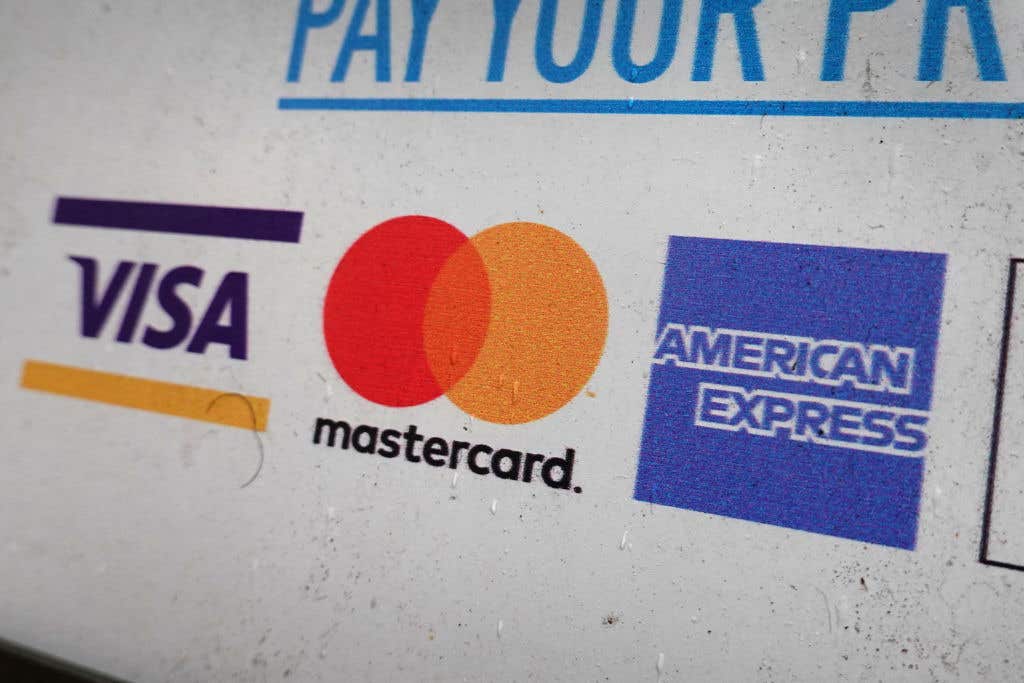
(Photo by Scott Olson/Getty Images)
Inflation is hurting everyone, especially those of us in Florida. The entire US is dealing with the inflation, but we have the added rising expense of housing and insurance in a way that many other states don't. When Lee County put my house into a flood zone it cost me an extra $1600 a year in insurance. So what happens when you struggle to meet basic needs? You start letting your credit cards add up. So it should come as no surprise that Florida ranks in the top 10 in states with the most credit card debt.
Here's the bullet points.
- Study reveals that Alaska is the state with the highest proportion of credit card debt, with an average of $4,430 per borrower. Hawaii is second with $4,260.
- Mississippi is the state with the lowest proportion of credit card debt, with an average of $2,450 per borrower.
- New Jersey($4,220), Maryland($4,190) and Connecticut($4040) also rank as states with high levels of credit card debt per borrower.
Money experts Moneywise analyzed household debt statistics released in May 2023 by the Federal Reserve Bank of New York to reveal which states have the highest amount of credit card debt per borrower.
Florida ranks ninth in states with the most credit card debt. with an average of $3,940 per borrower.
Wow. With interest rates trending upward that's an even more daunting number. Where are rates now? "The average credit card interest rate is 24.58%, according to Forbes Advisor’s weekly credit card rates report." That's $968.45 a year in interest. And if you don't pay it down, it compounds into next year.
Inflation is still higher than the federal government wants it to be, so odds are good they'll be raising rates another .25% in September. Which will raise credit card rates even further. Making this problem even worse.
South Florida Is Leading The Country In Inflation – Much More Than The Reported 3%
The new numbers are out and inflation has slowed to 3% year over year. Much lower than the 9.1% of June 2022. But let me tell you something about the CPI number that came out today. That 3% is the nationwide number. Additional statistics are available. CPI data are published for 23 metropolitan areas. And you can see a wide difference in these city's inflation number. In South Florida, specifically Tampa, it's much more than 3%. Much more.
WalletHub compared 23 major MSAs (Metropolitan Statistical Areas) across two key metrics related to the Consumer Price Index, which measures inflation. They compared the Consumer Price Index for the latest month for which BLS data is available to two months prior and one year prior to get a snapshot of how inflation has changed in the short and long term. The U.S. BUREAU OF LABOR STATISTICS does not include the Fort Myers - Naples market in the 23 major MSAs. But Tampa and Miami are. So there's a good bet that Southwest Florida is feeling some of the same pain that they are.
Cities Where Inflation is Rising The Most
| Overall Rank | MSA | Total Score | Consumer Price Index Change (Latest month vs 2 months before) |
Consumer Price Index Change (Latest month vs 1 year ago) |
|---|---|---|---|---|
| 1 | Tampa-St. Petersburg-Clearwater, FL | 100.00 | 1.70% | 7.30% |
| 2 | Atlanta-Sandy Springs-Roswell, GA | 72.56 | 1.20% | 4.60% |
| 3 | Detroit-Warren-Dearborn, MI | 70.09 | 1.10% | 4.70% |
| 4 | St. Louis, MO-IL | 68.42 | 1.30% | 3.10% |
| 5 | Seattle-Tacoma-Bellevue, WA | 66.68 | 1.00% | 4.60% |
| 6 | San Diego-Carlsbad, CA | 66.57 | 0.90% | 5.20% |
| 7 | Denver-Aurora-Lakewood, CO | 63.15 | 0.80% | 5.10% |
| 8 | Miami-Fort Lauderdale-West Palm Beach, FL | 62.82 | 0.50% | 6.90% |
| 9 | Dallas-Fort Worth-Arlington, TX | 61.27 | 0.80% | 4.70% |
| 10 | Riverside-San Bernardino-Ontario, CA | 57.49 | 0.80% | 3.90% |
| 11 | Washington-Arlington-Alexandria, DC-VA-MD-WV | 56.66 | 0.90% | 3.10% |
| 12 | Philadelphia-Camden-Wilmington, PA-NJ-DE-MD | 50.78 | 0.70% | 3.10% |
| 13 | New York-Newark-Jersey City, NY-NJ-PA | 47.95 | 0.70% | 2.50% |
| 14 | Los Angeles-Long Beach-Anaheim, CA | 45.01 | 0.60% | 2.50% |
| 15 | San Francisco-Oakland-Hayward, CA | 43.95 | 0.50% | 2.90% |
| 16 | Phoenix-Mesa-Scottsdale, AZ | 42.20 | 0.20% | 4.40% |
| 17 | Houston-The Woodlands-Sugar Land, TX | 38.29 | 0.50% | 1.70% |
| 18 | Chicago-Naperville-Elgin, IL-IN-WI | 37.24 | 0.40% | 2.10% |
| 19 | Minneapolis-St.Paul-Bloomington, MN-WI | 35.82 | 0.40% | 1.80% |
| 20 | Baltimore-Columbia-Towson, MD | 34.66 | 0.20% | 2.80% |
| 21 | Urban Honolulu, HI | 33.82 | 0.30% | 2.00% |
| 22 | Boston-Cambridge-Newton, MA-NH | 32.55 | 0.00% | 3.60% |
| 23 | Anchorage, AK | 11.77 | 0.40% | -3.30% |
Tampa is leading the way in inflation and Miami is 8th on this list. While in Anchorage, things appear to be getting cheaper.
A better look
Let's bring out the charts from the US Bureau of Labor Statistics to really show the point. The June CPI (Consumer Price Index) for the Midwest Region is up 2.4% over the year. That's lower than the national average number of 3%.
Now for Miami
The June CPI for Miami-Fort Lauderdale-West Palm Beach is at 6.9%. More than double the number that you'll hear on the news.
And Tampa?
The Tampa-St. Petersburg-Clearwater metro is at 7.3%. That chart wasn't yet posted on the site, but the May one is and there was no change.
"The all items CPI-U advanced 7.3 percent for the 12 months ending in May. The index for all items less food and energy increased 9.0 percent over the past year. The food index continued to rise, up 7.5 percent over the last 12 months. In contrast, the energy index fell 9.7 percent over the past year."
If Tampa and Miami's numbers are any indication as to what we have in Southwest Florida, we're probably somewhere around 7%. Look at that chart! Last year was 11%. Let's do some 2 year math. If something was $100 in May of 2021, it was $111 in May of 2022. Now it'd be nearly $119. So when you hear the news talk of inflation down to 3%, nationally, yes it is. But for us in Florida, we're still feeling it.
Consumer Price Index Change (Latest month vs 2 months before)
- 1. Tampa, FL
- 2. St. Louis, MO
- 3. Atlanta, GA
- 4. Detroit, MI
- 5. Seattle, WA
- T-17. Chicago, IL
- T-17. Minneapolis, MN
- 20. Honolulu, HI
- T-21. Baltimore, MD
- T-21. Phoenix, AZ
- 23. Boston, MA
Consumer Price Index Change (Latest month vs 1 year ago)
- 1. Tampa, FL
- 2. Miami, FL
- 3. San Diego, CA
- 4. Denver, CO
- T-5. Dallas, TX
- T-5. Detroit, MI
- 19. Chicago, IL
- 20. Honolulu, HI
- 21. Minneapolis, MN
- 22. Houston, TX
- 23. Anchorage, AK
Methodology
In order to determine the cities where inflation is rising the most, WalletHub compared 23 MSAs (Metropolitan Statistical Areas) across two key metrics involving the Consumer Price Index, which measures inflation. The metrics are listed below, along with their corresponding weights. We then determined each MSA’s weighted average across the metrics and used the resulting scores to rank-order our sample.
For each MSA in the sample, we used the latest data available from the Bureau of Labor Statistics. For some MSAs, there is a one-month lag on the data available.
Sources: Data used to create this ranking were obtained from the U.S. Bureau of Labor Statistics.
If you want to see the numbers on a different region, here's a link to the government site where this data came from.





